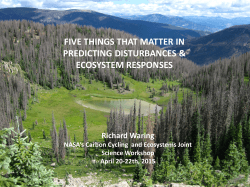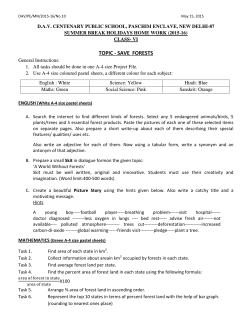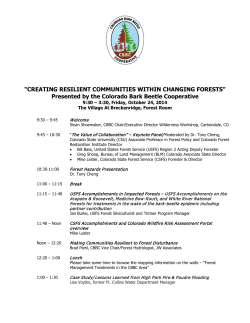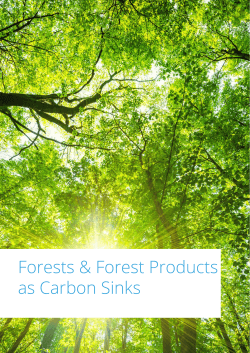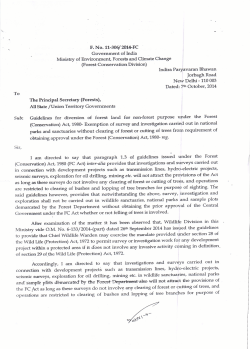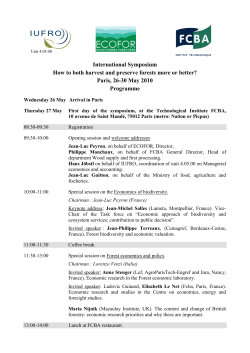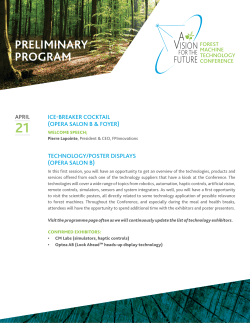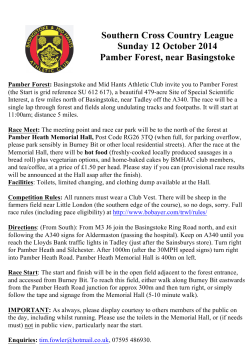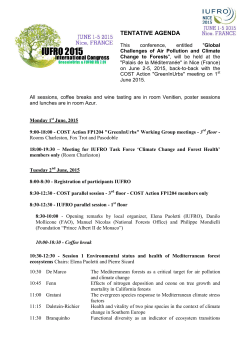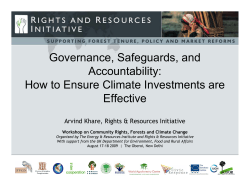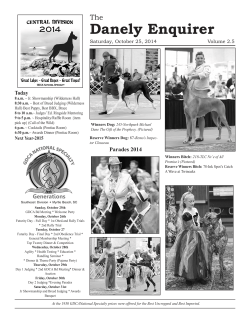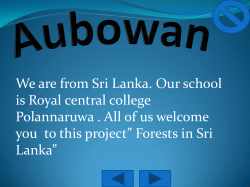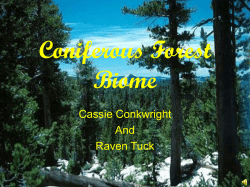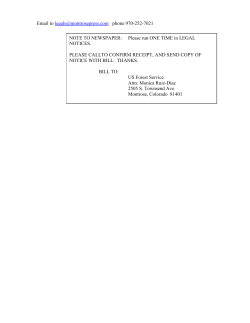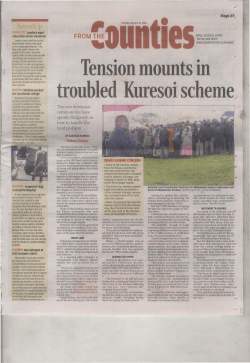
How and why can urban forest represent wilderness?
How and why can urban forest represent wilderness? Eveliina Asikainen Doctroral student in Environmental Policy University of Tampere Department of Regional Studies eveliina.asikainen@uta.fi Hervanta – a Finnish suburb Built in a forest Compact Planning started 1965 Construction started: 1972 First residents: 1973 Population: 25 000 (about 4500 are students) Nationalities: 1+75 (7,8% are other than Finnish) Suolijarvi forests on City of Tampere web pages You can find caves and hollows in the Suolijärvi forests The Suolijärvi recreation forest serves as outdoor sporting, recreation and nature enthsiasm activities of Hervanta dwellers Methods and Materials • Walking interviews with inhabitants of Hervanta • Descriptions of Suolijärvi forest produced by the inhabitants – photos in the internet – poems – blogs The Finnsh Wilderness Experience • Wilderness = erämaa (nautinta-alue) – most originally an area which has been marked or lined out – forest covered hunting and fishing areas located well away from village borders – part of satisfying physical basic needs of every day life Words Finns use most often to describe wilderness • Area in its natural state • completely uninhabited • old virgin forest • completely roadless • vast • peacefull silent • • • • • • • Remote Forest (in general) Mire without ditches Mire (in general) Barren Lot of living organisms Clean, without rubbish Hallikainen 1998: The Finnish wilderness experience. Finnish Forest Research Institute Research Papers,711. Wilderness in the walking interviews Structure of the forests in the surroundings of lake Suolijärvi it…it hasn’t been spoilt by management. It has been thinned out enough, but still there is some little more natural like areas. (Man about 30) I think people consider this quite natural. We let the fallen trees lie (City forester) Making difference between parks and forests Expressions – Those parks we visit, here we hike. – backwoods – real forests – being in the middle of forests – going as deep in the forest as possible Practicing wilderness • rubber boots • taking coffee and something to eat along • not following paths, exploring • expecting to meet animals • making fires • building huts Contrast – mental distance • Just a small walk and you are in the middle of the forest and hear nothing but birds singing and those lakes are near by, just go and sit on a pier for a while. I wouldn’t live here, if there weren’t forests and lakes. My two worlds match well here (woman 24 years in Pikkupeura 2005). Peace – space - freedom May be I myself like to be specially in such a place where I don’t have to go side by side with other people and so… there isn’t such an awful crowd here…you don’t have to give way to anybody. This is such a soothing place for me myself (Woman, about 45) Often I spot a place on the map, somewhere I have never been. And if only I have time I take off skiing. Last winter I watched from the map… There was often tracks all the way and sometimes I had to go the last couple of hundred meters in snow maybe. (Man, about 55). Fear • of getting lost • of animals • of trees… but it adds value to the forest Wilderness in representations of Lake Suolijärvi Suolijärvi forest on Hervanta web pages and nature trail leaflet • Traditional Lapland landscape photograph... but instead is from Suolijärvi, Hervanta, Tampere, Finland http://www.flickr.com/photos/damork/1462504993/ Dangerous herwoodian crocodile •http://wiki.worldflicks.org/suolij%C3%A4rvi.html# A sunset at a smaller lake near Suolijärvi in Hervanta. http://www.cs.uta.fi/~anssi/turvotus/valokuvaus/galleries/mokilla/page7.html Wilderness revisited Wilderness • is always in relation to other environments, culture and the social setting; negotiated • In this case is constructed of – space, nearness and wildness + residents’ activities • Orginally served to satisfy physical basic needs – now more psychological and social needs like health, revitalisation, being alone Implications to Urban forestry 1. Meanings people give don’t fit classifications 2. Photos & in depth interviews are promising methods to find out about feelings, emotions and representations 3. Traditional concepts like wilderness can offer tools for management 4. Taking wildness of a forest as a positive value and something to be maintained and developed
© Copyright 2025

